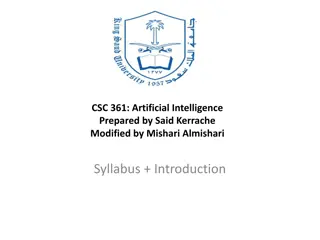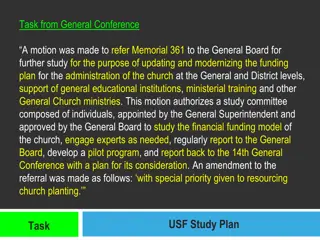
Understanding Natural Language Processing Semantics
Explore the intricacies of natural language processing (NLP) semantics, from parsing mathematical expressions to representing and understanding linguistic meaning. Delve into the properties of verifiability, unambiguousness, expressiveness, and inference in NLP. Discover how logic representations and inference play a role in capturing and analyzing linguistic utterances effectively.
Download Presentation

Please find below an Image/Link to download the presentation.
The content on the website is provided AS IS for your information and personal use only. It may not be sold, licensed, or shared on other websites without obtaining consent from the author. If you encounter any issues during the download, it is possible that the publisher has removed the file from their server.
You are allowed to download the files provided on this website for personal or commercial use, subject to the condition that they are used lawfully. All files are the property of their respective owners.
The content on the website is provided AS IS for your information and personal use only. It may not be sold, licensed, or shared on other websites without obtaining consent from the author.
E N D
Presentation Transcript
Introduction to NLP Semantics
Semantics What is the meaning of: (5+2)*(4+3)? Parse tree 49 E E E F F E * E E F E + N N N + N 2 4 3 5
Semantics What if we had (5+2)*(4+z)? mult(add(5,2),add(4,z)) E E E F F E * E E F E + N N N + N 2 4 z 5
What about (English) sentences? Every human is mortal. ??
Representing Meaning Goal Capturing the meaning of linguistic utterances using formal notation Linguistic meaning It is 8 pm Pragmatic meaning It is time to leave Semantic analysis: Assign each word a meaning Combine the meanings of words into sentences I bought a book: x,y: Buying(x) ^ Buyer(speaker,x) ^ BoughtItem(y,x) ^ Book(y) Buying (Buyer=speaker, BoughtItem=book)
Introduction to NLP Representing and Understanding Meaning
Understanding Meaning If an agent hears a sentence and can act accordingly, the agent is said to understand it Example Leave the book on the table Understanding may involve inference Maybe the book is wrapped in paper? And pragmatics Which book? Which table? So, understanding may involve a procedure
Properties Verifiability Can a statement be verified against a knowledge base (KB) Example: does my cat Martin have whiskers? Unambiguousness Give me the book Which book? Canonical form Expressiveness Can the formalism express temporal relations, beliefs, ? Is it domain-independent? Inference
Representing Meaning One traditional approach use logic representations, e.g., FOL (first order logic) Inference One can then use theorem proving (inference) to determine whether one statement entails another
Syntax of Propositional Logic The simplest type of logic The proposition symbols P1, P2, are sentences If S is a sentence, S is a sentence (negation) If S1 and S2 are sentences, S1 S2 is a sentence (conjunction) If S1 and S2 are sentences, S1 S2 is a sentence (disjunction) If S1 and S2 are sentences, S1 S2 is a sentence (implication) If S1 and S2 are sentences, S1 S2 is a sentence (biconditional)
Propositional Logic in Backus Naur Form Sentence AtomicSentence | ComplexSentence AtomicSentence True | False | S | T | U ... ComplexSentence (Sentence) | Sentence | Sentence Sentence | Sentence Sentence | Sentence Sentence | Sentence Sentence
Operator Precedence (highest) (lowest)
Translating Propositions to English A = Today is a holiday. B = We are going to the park. A B A B A B B A B A
Translating Propositions to English A = Today is a holiday. B = We are going to the park. A B If today is a holiday, we are going to the park. A B Today is a holiday, and we are not going to the park. A B If today is not a holiday, then we are not going to the park. B A If we are not going to the park, then today is not a holiday. B A If we are going to the park, then today is a holiday.
Semantics of Propositional Logic S S1 S2 S1 S2 S1 S2 i.e.S1 S2 is false iff S1 is true and S2 is false S1 S2 is true iff S1 S2 is true and S2 S1 is true Recursively, one can compute the truth value of longer formulas is true iff S is false is true iff S1 is true and S2 is true is true iff S1is true or is true iff S1 is false or S2 is true S2 is true
Connectives P T T F F P Q F F F T P Q F T T T P Q T T F T P Q T F F T P F F T T Q F T F T
Logical Equivalence [From Russell and Norvig]









